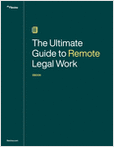The quickly increasing costs of e-discovery have had a dampening effect on lawyers’ ability to formulate the best case strategy for their clients. That may be about to change. The e-discovery process is on the cusp of moving from basic to advanced, or version 1.0 to version 2.0. This article examines how lawyers can use new technologies to reduce costs to clients while still complying with discovery obligations. Ultimately, lawyers who embrace new e-discovery tools will be better equipped to meet their clients’ needs with cost-effective solutions.
Electronic data (“e-data”) presents unique problems in discovery. Although the data can be more easily searched, it is also more voluminous, widely dispersed and sometimes more difficult to track down than paper documents. E-mails alone often constitute thousands of pages of data in a case. Moreover, the fluid and changing nature of e-data allows multiple drafts of documents to be created quickly and easily. Metadata and the various platforms used to store e-data create additional complications in the e-discovery process. These complications, particularly when not planned for or managed properly, can result in significantly increased litigation and discovery costs.




